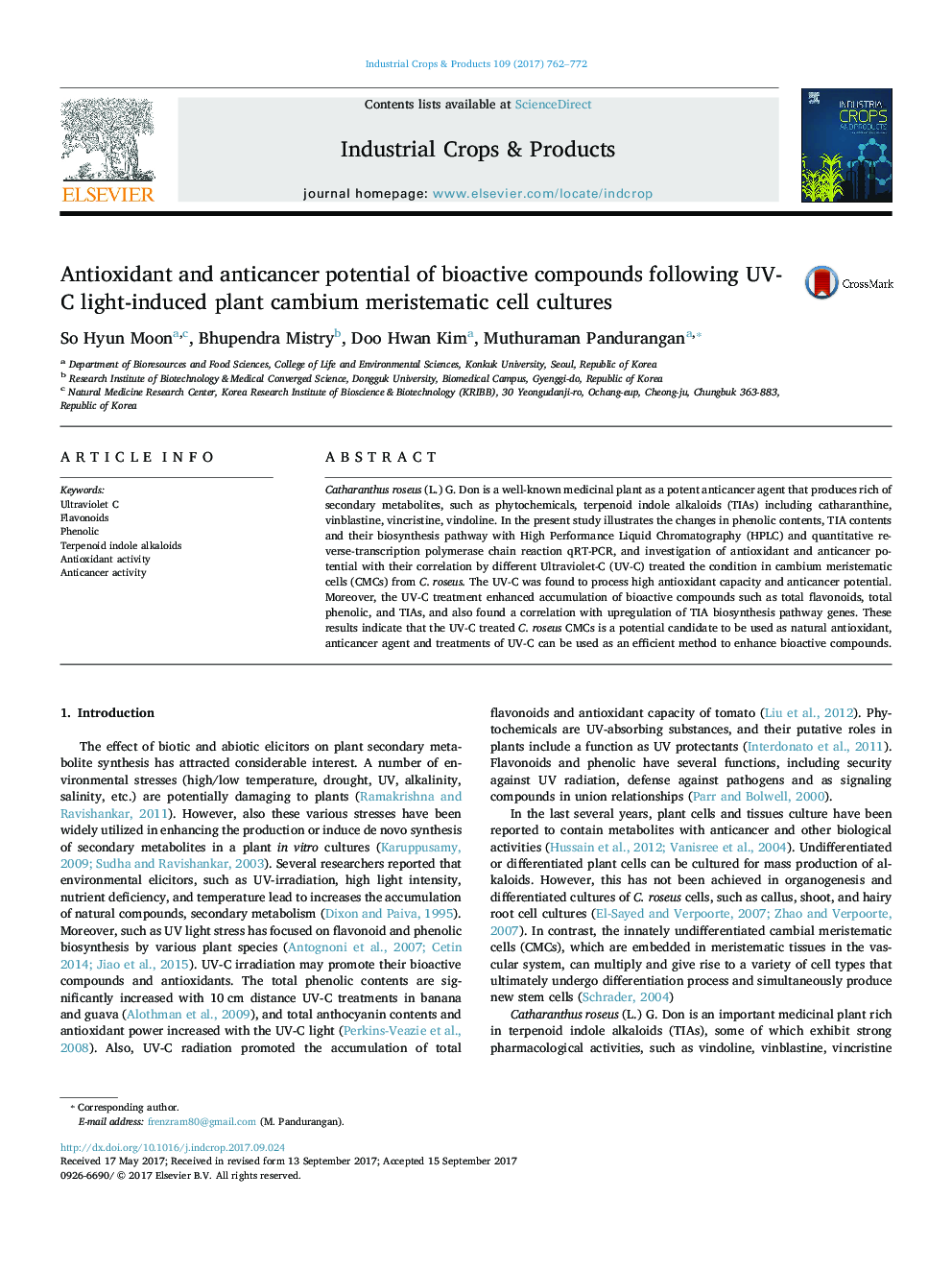| Article ID | Journal | Published Year | Pages | File Type |
|---|---|---|---|---|
| 5761754 | Industrial Crops and Products | 2017 | 11 Pages |
Abstract
Catharanthus roseus (L.) G. Don is a well-known medicinal plant as a potent anticancer agent that produces rich of secondary metabolites, such as phytochemicals, terpenoid indole alkaloids (TIAs) including catharanthine, vinblastine, vincristine, vindoline. In the present study illustrates the changes in phenolic contents, TIA contents and their biosynthesis pathway with High Performance Liquid Chromatography (HPLC) and quantitative reverse-transcription polymerase chain reaction qRT-PCR, and investigation of antioxidant and anticancer potential with their correlation by different Ultraviolet-C (UV-C) treated the condition in cambium meristematic cells (CMCs) from C. roseus. The UV-C was found to process high antioxidant capacity and anticancer potential. Moreover, the UV-C treatment enhanced accumulation of bioactive compounds such as total flavonoids, total phenolic, and TIAs, and also found a correlation with upregulation of TIA biosynthesis pathway genes. These results indicate that the UV-C treated C. roseus CMCs is a potential candidate to be used as natural antioxidant, anticancer agent and treatments of UV-C can be used as an efficient method to enhance bioactive compounds.
Keywords
Related Topics
Life Sciences
Agricultural and Biological Sciences
Agronomy and Crop Science
Authors
So Hyun Moon, Bhupendra Mistry, Doo Hwan Kim, Muthuraman Pandurangan,
